
How to Use 22.5W Powe Bank: Examples, Pinouts, and Specs
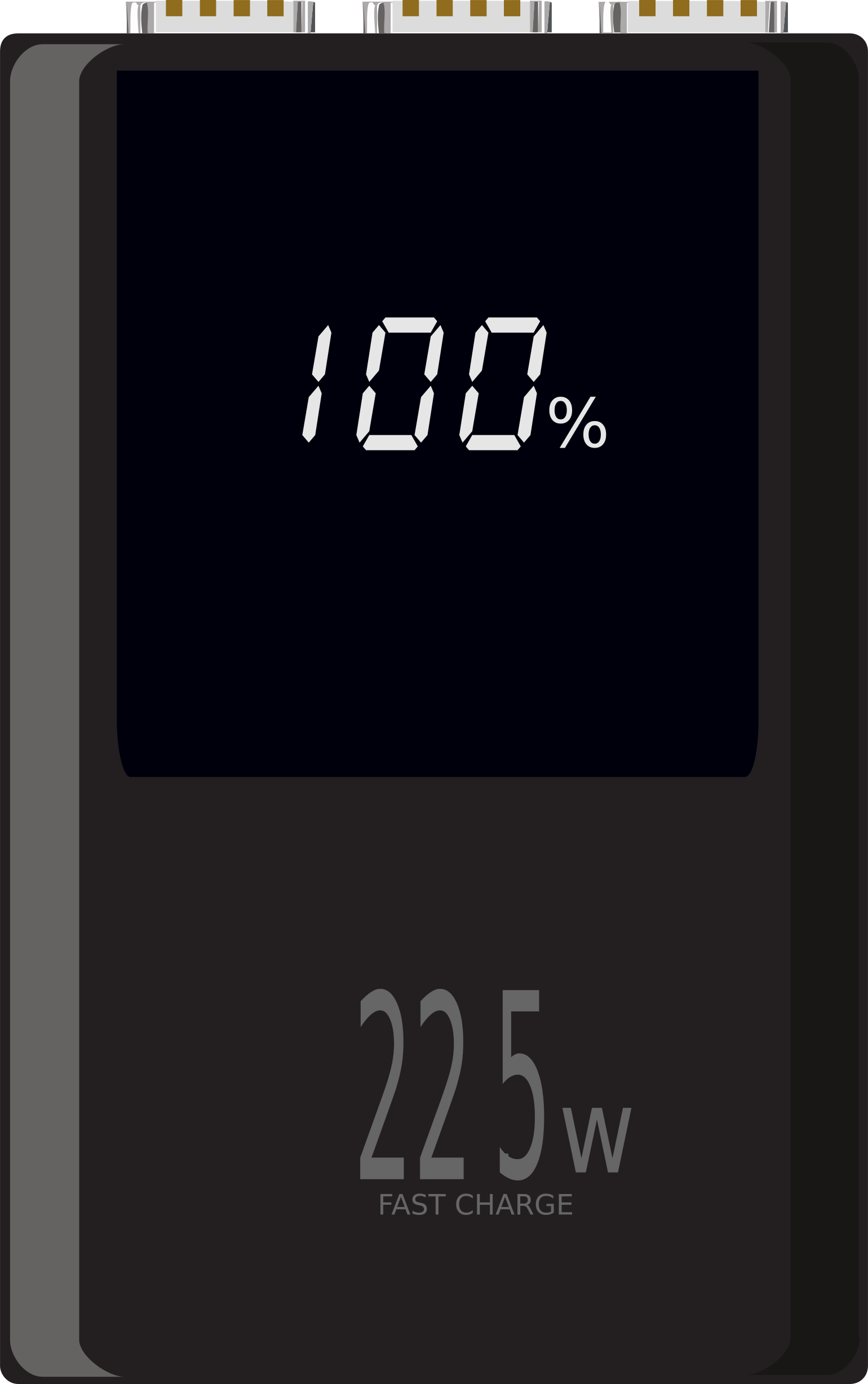
 Design with 22.5W Powe Bank in Cirkit Designer
Design with 22.5W Powe Bank in Cirkit DesignerIntroduction
The 22.5W Power Bank is a portable battery pack designed to provide reliable and efficient charging for devices such as smartphones, tablets, and other USB-powered gadgets. With its compact design and high output power, it is an ideal solution for users who need to charge their devices on the go. The power bank supports fast charging, ensuring minimal downtime for your devices.
Explore Projects Built with 22.5W Powe Bank
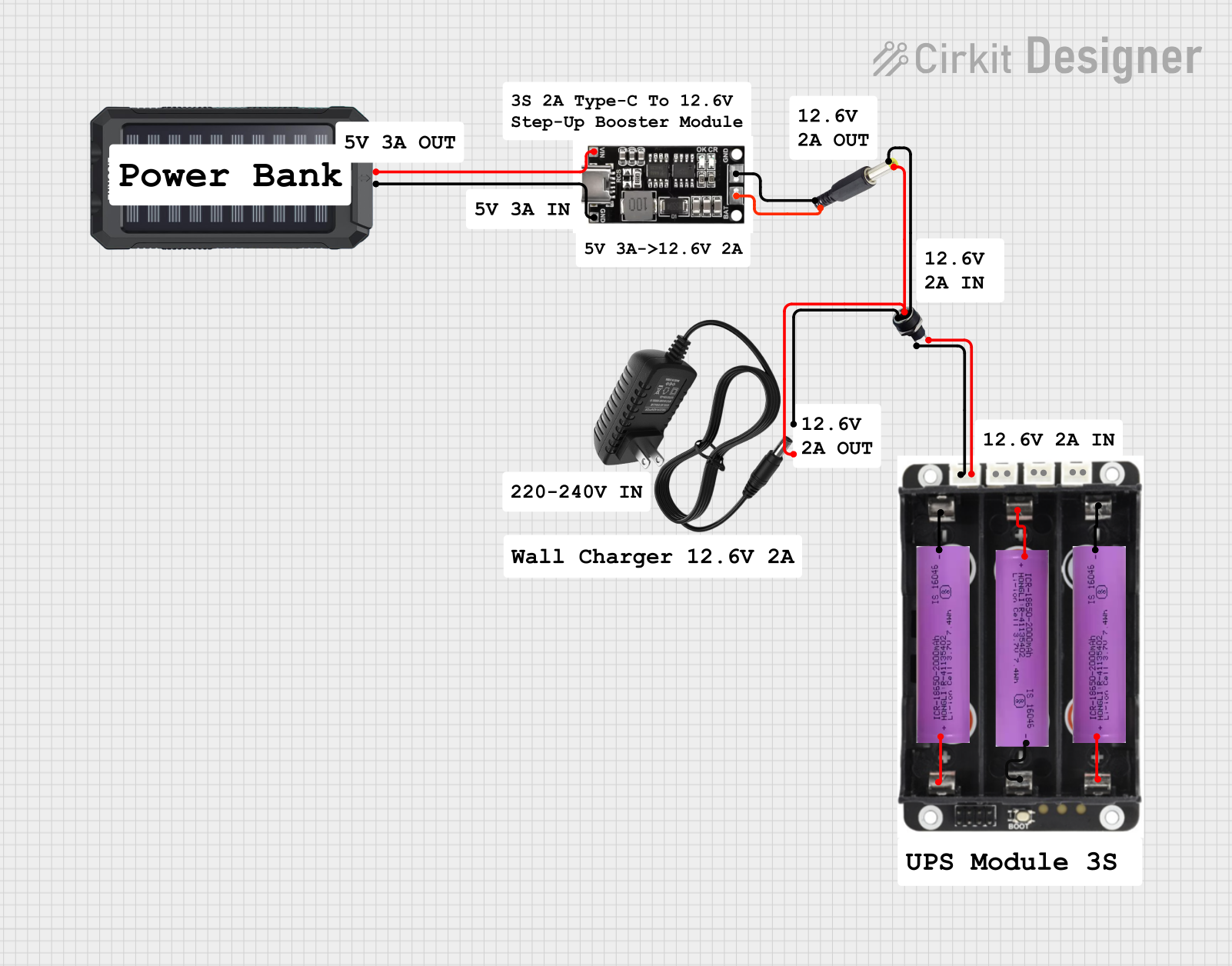
 Open Project in Cirkit Designer
Open Project in Cirkit Designer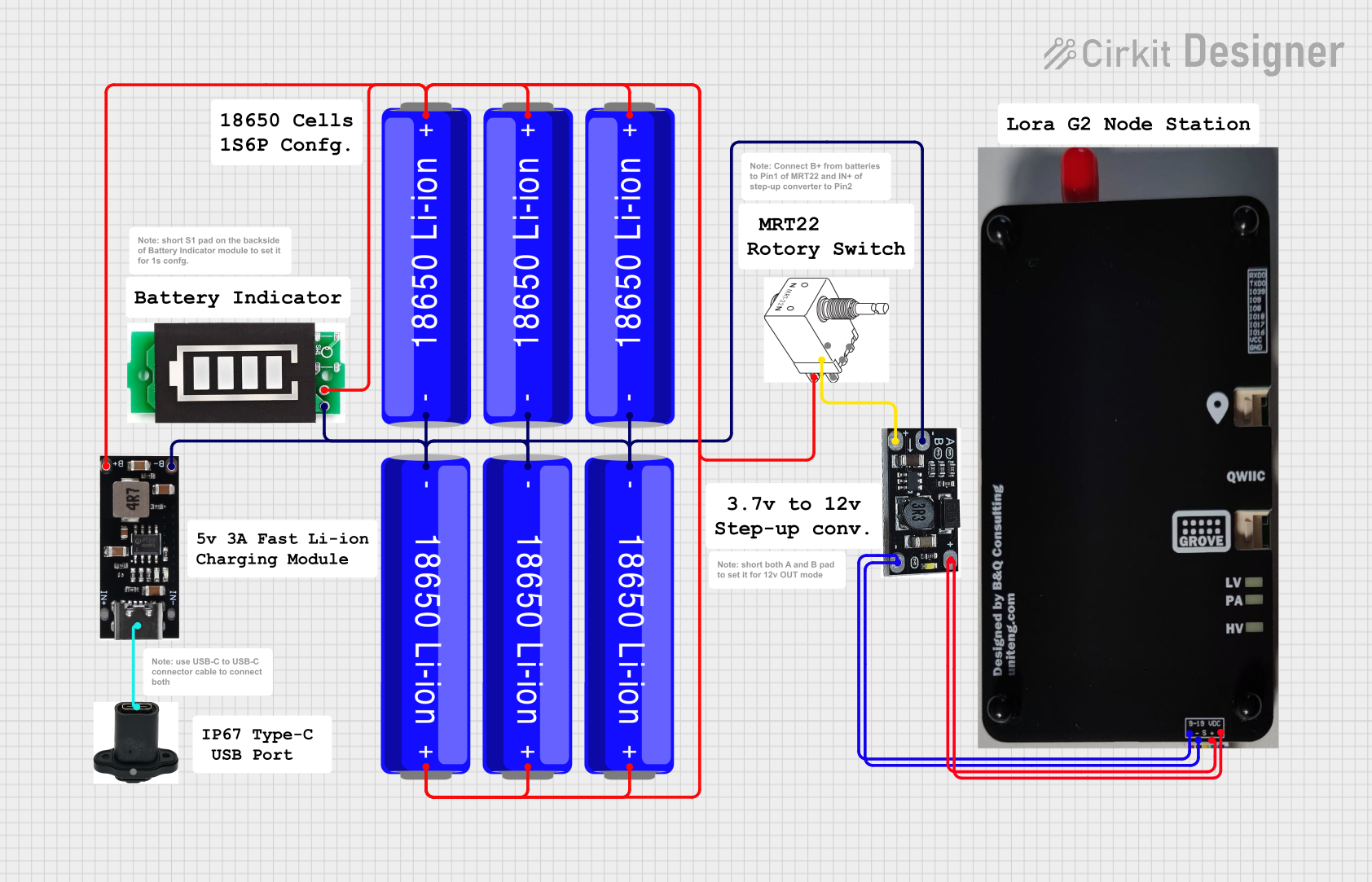
 Open Project in Cirkit Designer
Open Project in Cirkit Designer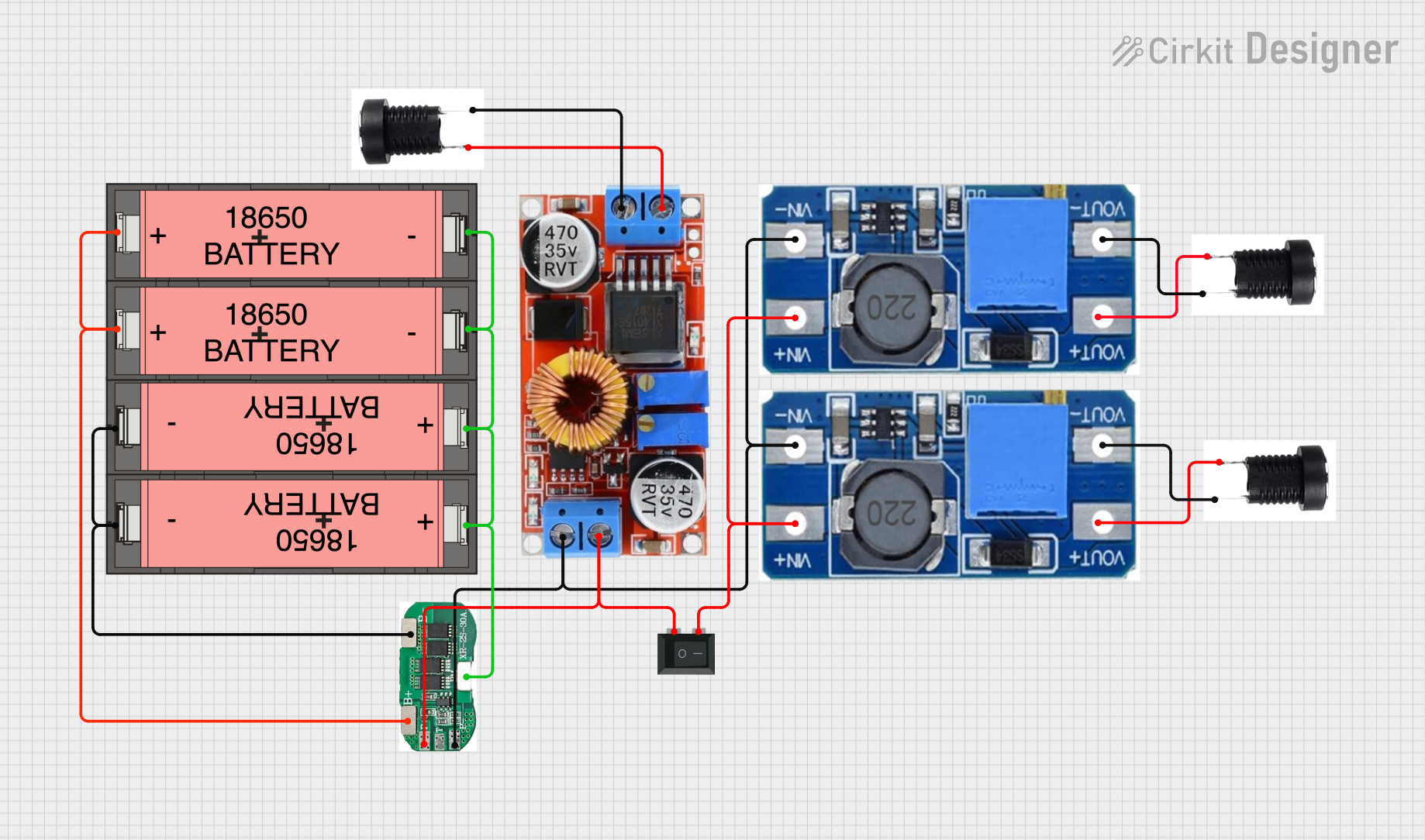
 Open Project in Cirkit Designer
Open Project in Cirkit Designer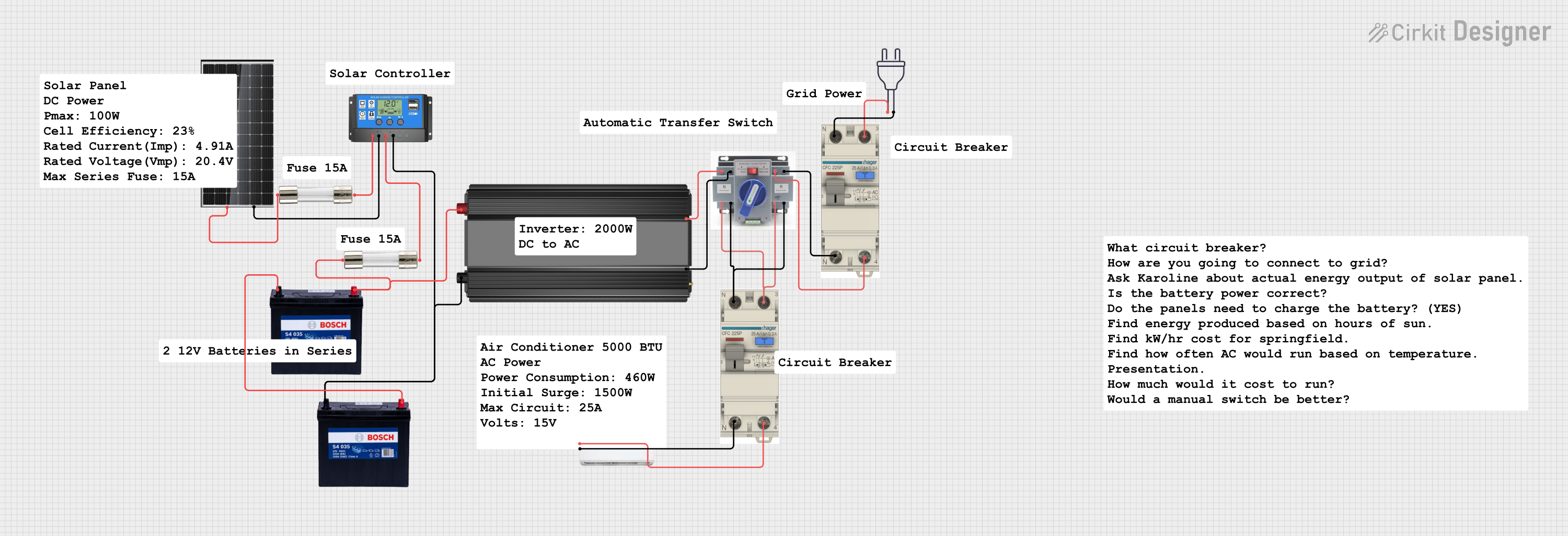
 Open Project in Cirkit Designer
Open Project in Cirkit DesignerExplore Projects Built with 22.5W Powe Bank

 Open Project in Cirkit Designer
Open Project in Cirkit Designer
 Open Project in Cirkit Designer
Open Project in Cirkit Designer
 Open Project in Cirkit Designer
Open Project in Cirkit Designer
 Open Project in Cirkit Designer
Open Project in Cirkit DesignerCommon Applications and Use Cases
- Charging smartphones, tablets, and other USB-powered devices while traveling.
- Providing backup power during outdoor activities such as camping or hiking.
- Emergency power supply during power outages.
- Supporting fast charging for compatible devices.
Technical Specifications
Key Technical Details
| Parameter | Specification |
|---|---|
| Output Power | 22.5W |
| Input Voltage/Current | 5V/2A, 9V/2A |
| Output Voltage/Current | 5V/3A, 9V/2.5A, 12V/1.87A |
| Battery Capacity | 10,000mAh |
| Charging Port Types | USB-A, USB-C |
| Dimensions | 140mm x 70mm x 15mm |
| Weight | 200g |
| Protection Features | Overcharge, overcurrent, short circuit, and temperature protection |
Port Configuration and Descriptions
| Port Type | Description |
|---|---|
| USB-A | Standard output port for charging devices. Supports fast charging. |
| USB-C | Input/output port for charging the power bank or devices. Supports PD (Power Delivery). |
| Micro-USB | Input port for charging the power bank (legacy option). |
| LED Indicators | Four LEDs to indicate the battery charge level (25%, 50%, 75%, 100%). |
Usage Instructions
How to Use the 22.5W Power Bank in a Circuit
Charging the Power Bank:
- Connect the USB-C or Micro-USB input port to a power source (e.g., wall adapter or laptop).
- Ensure the input voltage and current match the specifications (e.g., 5V/2A or 9V/2A).
- The LED indicators will blink to show the charging progress. When fully charged, all four LEDs will remain lit.
Charging Devices:
- Connect your device to the USB-A or USB-C output port using a compatible cable.
- The power bank will automatically detect the connected device and begin charging.
- For fast charging, ensure your device supports the required voltage/current levels (e.g., 9V/2.5A).
Using with Arduino UNO:
- The power bank can be used to power an Arduino UNO via its USB-A port.
- Connect the USB-A port of the power bank to the Arduino UNO's USB input using a USB cable.
- Ensure the power bank is charged and capable of providing sufficient current (at least 500mA) for the Arduino UNO and any connected peripherals.
Example Code for Arduino UNO
/* Example: Blink an LED using power from the 22.5W Power Bank.
Ensure the power bank is connected to the Arduino UNO via USB. */
const int ledPin = 13; // Pin 13 is connected to the onboard LED
void setup() {
pinMode(ledPin, OUTPUT); // Set pin 13 as an output
}
void loop() {
digitalWrite(ledPin, HIGH); // Turn the LED on
delay(1000); // Wait for 1 second
digitalWrite(ledPin, LOW); // Turn the LED off
delay(1000); // Wait for 1 second
}
Important Considerations and Best Practices
- Use only high-quality cables to ensure efficient charging and prevent damage to devices.
- Avoid exposing the power bank to extreme temperatures or moisture.
- Do not attempt to disassemble or modify the power bank, as this may void the warranty and pose safety risks.
- Regularly check the LED indicators to monitor the battery level and recharge as needed.
- Disconnect the power bank from devices once charging is complete to conserve battery life.
Troubleshooting and FAQs
Common Issues and Solutions
| Issue | Possible Cause | Solution |
|---|---|---|
| Power bank not charging devices | Low battery level or faulty cable | Check the LED indicators and recharge the power bank. Replace the cable if necessary. |
| Devices not fast charging | Incompatible device or cable | Ensure the device and cable support fast charging. Use a certified fast-charging cable. |
| Power bank not charging itself | Faulty input cable or adapter | Verify the input cable and adapter are functional and meet the required specifications. |
| LED indicators not working | Internal fault or drained battery | Recharge the power bank. If the issue persists, contact customer support. |
FAQs
Can I charge multiple devices simultaneously?
- Yes, you can charge multiple devices using the USB-A and USB-C ports. However, the total output power will be shared between the ports.
How long does it take to fully charge the power bank?
- It takes approximately 4-5 hours to fully charge the power bank using a 9V/2A adapter.
Is the power bank safe to use with sensitive electronics?
- Yes, the power bank includes multiple protection features such as overcharge, overcurrent, and short circuit protection to ensure safe operation.
Can I use the power bank while it is charging?
- Yes, the power bank supports pass-through charging, allowing you to charge devices while the power bank itself is being charged. However, this may slightly reduce charging efficiency.
By following this documentation, you can effectively use the 22.5W Power Bank to power your devices and projects with confidence.